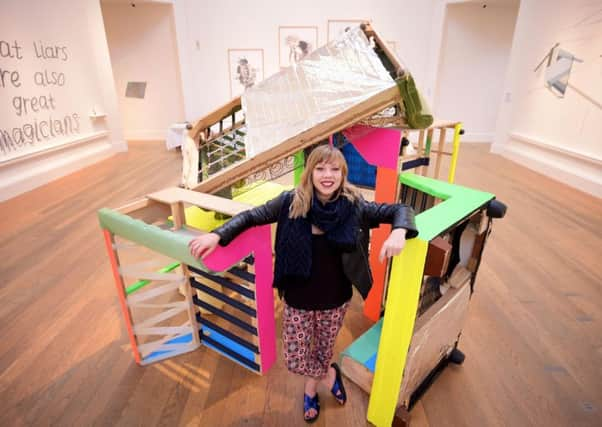Sculpture made of discarded sofas wins top Scots art prize


Emily Binks, who specialises in making art from abandoned furniture, will benefit from a £10,000 residency with one of the country’s leading distilleries.
She has even been using survival skills she has learnt as a Scout leader to turn them into temporary shelters, including the one which has won her the new art prize, which was launched last year.
Advertisement
Hide AdAdvertisement
Hide AdThe artist’s Glenfiddich Residency Award will see her provided with a house and studio in Speyside for three months, as well as a budget for new work which will go on display at the Dufftown distillery.
Her work was chosen from entries by 61 different artists to a showcase of Scotland’s emerging artistic talents, which is at the Royal Scottish Academy in Edinburgh until the end of this month.
She will join artists from around the world taking part in the annual residency programme at the distillery this summer, as well as get the chance to show her work in London as part of a major showcases of the best of Scottish art later this year.
Ms Binks, who graduated with a BA in sculpture last year, said: “My art practice and personal interests have been becoming more and more intertwined recently. I’ve been re-homing discarded pieces of furniture from around Edinburgh, then combining that with my experiences of being a Scout leader and my knowledge of survival skills.
“I’m experimenting with construction of temporary shelters made from reclaimed materials which humans can interact with, encouraging them to develop a new understanding of objects both in art and day-to-day life.”
Andy Fairgrieve, co-ordinator of the Glenfiddich Artists in Residence programme, said: “Emily’s sculptural assemblage invokes a basic fundamental of the human condition: from building dens as children to setting up homes as independent adults, we can all relate to the creation of a place to shelter and a sense of belonging.”
One of Scotland’s leading sculptors, Kenny Hunter, who helped judge the award, was one of the first artists to benefit from a Glenfiddich residency, in 2002.
He said: “Good residency programs such as the one at Glenfiddich are few and far between in Scotland and they perform a key role in the development of an artist’s identity.”